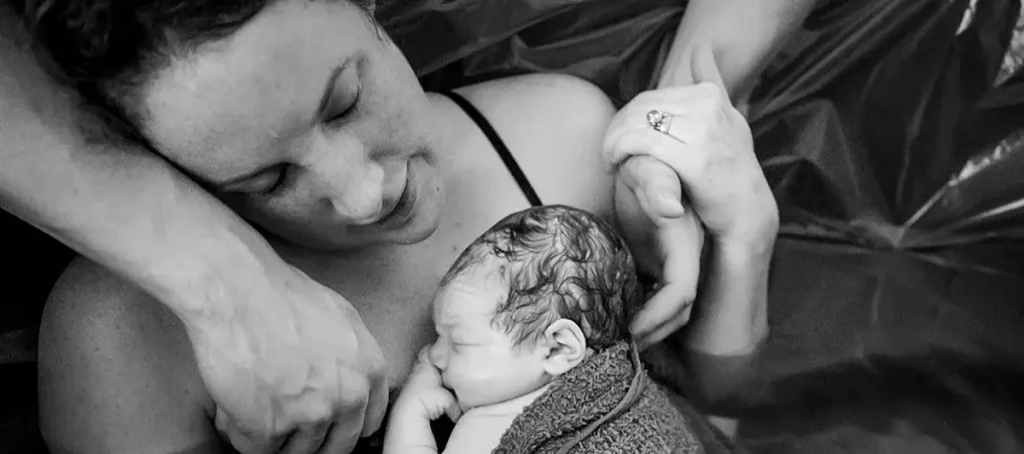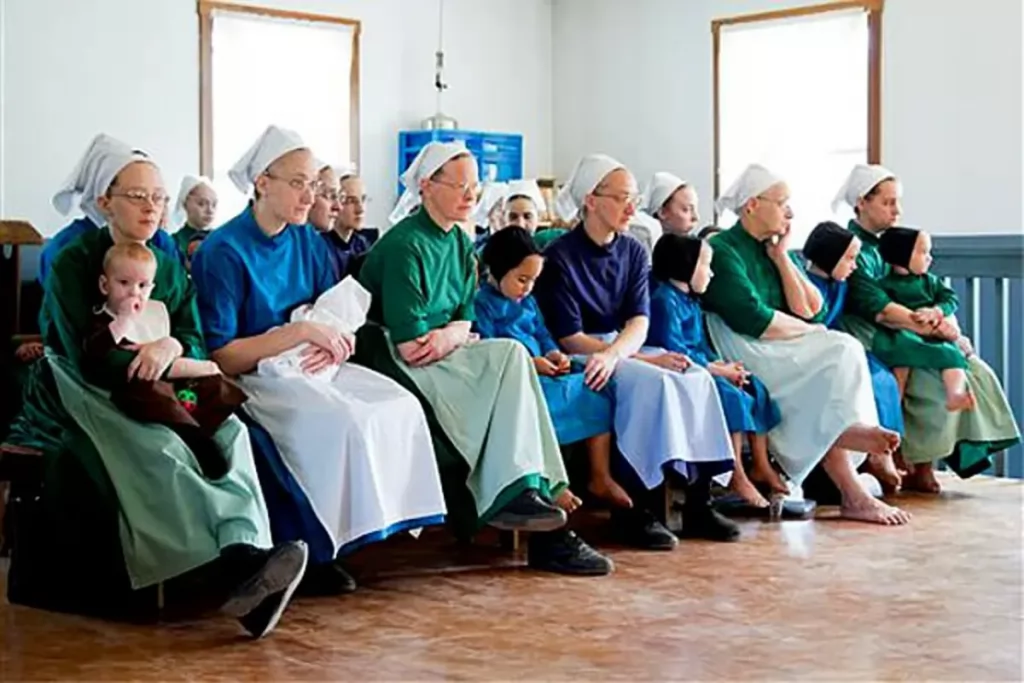The Amish refuse to enjoy the benefit of today’s technology, such as electricity, mobile phones, computers, medicines, and even medical or health insurance. Naturally, this raises the question, “How do Amish women give birth?“
Amish women give birth at home in a more natural way with the assistance of their family and midwives. Those with medium to high-risk pregnancies go to a birth center or a local hospital to receive the best medical services their conditions require.
For those who don’t belong to the community, the way the Amish give birth can be intriguing. If you are finding yourself curious about the process, this article can help you understand them better.
How Do Amish Women Give Birth?
Some English people attend numerous antenatal or birthing classes and even hire a Douala to physically and emotionally help them with childbirth. The Amish, having no access to these perks, get help and support from their family, children, husband, and other people from their communities experienced with Amish birth or home delivery.
Where are Amish Babies Born?
Generally, Amish women give birth to a baby in three places – at home, a birthing center, or a hospital.
Home
Most Amish children are born in the comfort of their homes. This idea can be challenging for some of us outside this community because we are often taught that home births come with certain risks. They are linked to a higher risk of infant death, convulsions, and other disorders than planned hospital births.
Amish women who are not experiencing any issues with their pregnancies prefer home birth, where they can be close to their families during this important chapter of their lives. They typically seek the assistance of a local midwife or a doctor who understands the Amish way of life.
Birthing Centers
A birthing center is the second choice for most Amish women. Midwives working in an Amish birthing center are both Amish and non-Amish.
Since the Amish only provide formal education until an Amish child’s eighth grade, this has become one of the controversies they had to face due to the government’s regulations regarding health and well-being.
The Amish are known as pacifists, which is why none of them join the Military. They tend to avoid any publicity or disagreements on politics, etc.
In 1990, however, more than 500 Amish and Mennonite people from Pennsylvania gathered and rallied to support a bill allowing uncertified midwives to deliver Amish babies in the state.
They were forced to move because they believed the state government was already intruding on their centuries-old childbirth practices after the state sued a lay midwife in Mercer County for delivering hundreds of babies to Amish women.
Despite all this, many Amish women experiencing normal pregnancies choose their local birthing centers over hospitals for cost and comfort. In addition, these centers usually discharge patients to the care of their family members four hours after giving birth, which most Amish families prefer.
The only thing that these centers can’t provide is advanced medical treatment and caesarian sections. For these types of procedures, they transport patients to nearby hospitals.
Hospitals
Since the Amish don’t carry commercial insurance, giving birth in hospitals is an issue in terms of cost. While some practices may vary from each Amish community, some have already built their own healthcare, funded by a system that combines church support, benefit auctions, and arranged discounts with local health centers and hospitals.
For some Amish communities with no arranged healthcare system, support from the other members of the Amish church can be surprising to non-Amish folks. This trait of the Amish people, who often go out of their way to help those in need, is one of a kind for many.
If the hospital gives a bill they can’t settle, the Amish church and the members will pay for it. After all, it is God’s teaching to help one another.
What Things Do Pregnant Amish Women Do Differently?
While many of us regard the Amish as conservative, it’s a bit different when it comes to giving birth. This goes particularly true with pregnant Amish women as they do things a bit differently when it’s time to give birth.
Amish women are not afraid of labor.
We all have that one friend or relative who’s about to become a new mom, telling us about her fear of experiencing difficult and painful labor. Or, maybe, a social media post about a birth story gone wrong. No wonder, the society we’re living in now is full of worries, especially regarding the subject of giving birth.
Amish women don’t have the same fear. Most come from large families where childbirth is standard and considered a blessing, especially in the case of multiple births.
Expectant mothers from Amish communities don’t use Epidurals.
Since the Amish don’t get any benefits from modern stuff the rest of us are accustomed to, like modern medicines, they don’t take any pain relief. With that, they don’t allow doctors and other medical professionals to give them anything that will soothe the pain during childbirth.
For the Amish, childbirth is like any other chore that needs to be completed successfully. They also believe giving birth to a new baby means receiving God’s blessing wholeheartedly.
Therefore, all that pain experienced in labor and delivery is nothing compared to their belief. After all, it is called “labor” for a reason.
Due date is not a thing in the Amish Community.
For Amish families, setting a due date when the baby is expected to arrive is absurd. While we are busy ticking the days off a calendar, they believe that nature will decide if it’s time for the baby’s entrance to the human world.
Scheduled caesarian sections and inductions are rare and only happen in medical emergencies where any worst thing could happen – like where the baby’s or the mother’s life would be at risk.
The Amish don’t discuss their pregnancies in the open.
When a typical non-Amish woman gets pregnant, one of the first things she and her husband plan is how to announce it to their children, family, and friends. It may be a social media post, a party, or a group text.
In an Amish community, they take modesty seriously. Since pregnancy is a blessing, announcing it may be misinterpreted as bragging and insensitive to others trying to conceive or recently experiencing child loss.
A unique birthing garment is worn in Amish births.
All Amish women prefer to stay covered up all the time as much as possible, and giving birth is not an exception.
For this occasion, they prepare a unique dress that will still cover the whole body but has access to where the baby should come out. It also has a small opening near the stomach to allow the mother and the new baby to have skin-to-skin contact.
The Amish never use birth control.
The strict Amish traditions dictate that any form of birth control should never be used. For them, using one is like refusing to accept a gift from God. More children, more blessings.
A typical Amish family has six to nine children in total. These children are raised and trained to be responsible, having household chores at the age of five. The Amish way of raising children helps make the day-to-day life of an Amish woman with multiple children less heavy.
Amish babies don’t drink breast milk right away.
In the non-Amish world, an expectant mother is taught that after giving birth, the baby should latch immediately to ensure that it can benefit from the first drops of nutrient-rich breast milk known as the colostrum.
In the Amish world, they believe that newborn babies should not jump to breastfeeding immediately. They often have to wait hours after birth, and the babies are given watermelon seed tea or jello water, which is supposed to prevent jaundice.
Pregnant Amish women stay active.
While waiting for the baby to arrive, there’s no reason for a pregnant Amish woman to hit the pause button on her chores and daily activities in their home or farm.
They consider staying active vital because it helps move the baby down to the pelvis, making the labor and delivery more manageable, especially if they’re going for a home birth.
Unless she has a medical condition tied to her pregnancy, she prefers doing her usual tasks until her new baby arrives, especially if she has other children to care for.
While other pregnant women in the modern world are busy planning their baby showers, Amish women are occupied with completing their chores before the end of the day.
Conclusion
Other modern pregnant women dream of giving birth at home. However, no matter how advanced we think we are now, our society doesn’t always support home birth due to the risks for both the mother and the baby. We are so used to the support of our healthcare system that consistently provides everything we need.
Since Amish communities help and support each one of their members, they have a different way of accomplishing anything.
It’s safe to say that they don’t automatically reject support from anyone outside their community; it’s just that the Amish people have centuries-old traditions and practices that they prefer to follow unless unexpected situations would occur and require assistance from the outside.
The absence of technology and regular medical interventions make the Amish births different from what the rest of the modern world is accustomed to.
It’s a combination of old-fashioned methods being done before established birthing centers, hospitals, medical doctors, and insurance companies are born, plus a series of practices applied based on the teachings of the Amish church.
Tags: Amish Birth






Do the Amish cut the umbilical cord?
What do they do with the afterbirth?
Do they have a birth certificate?
Thank you!!!